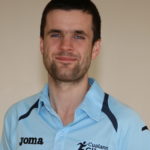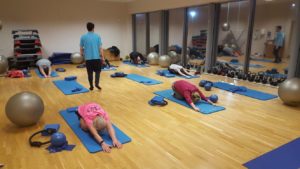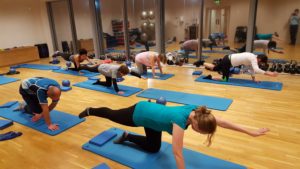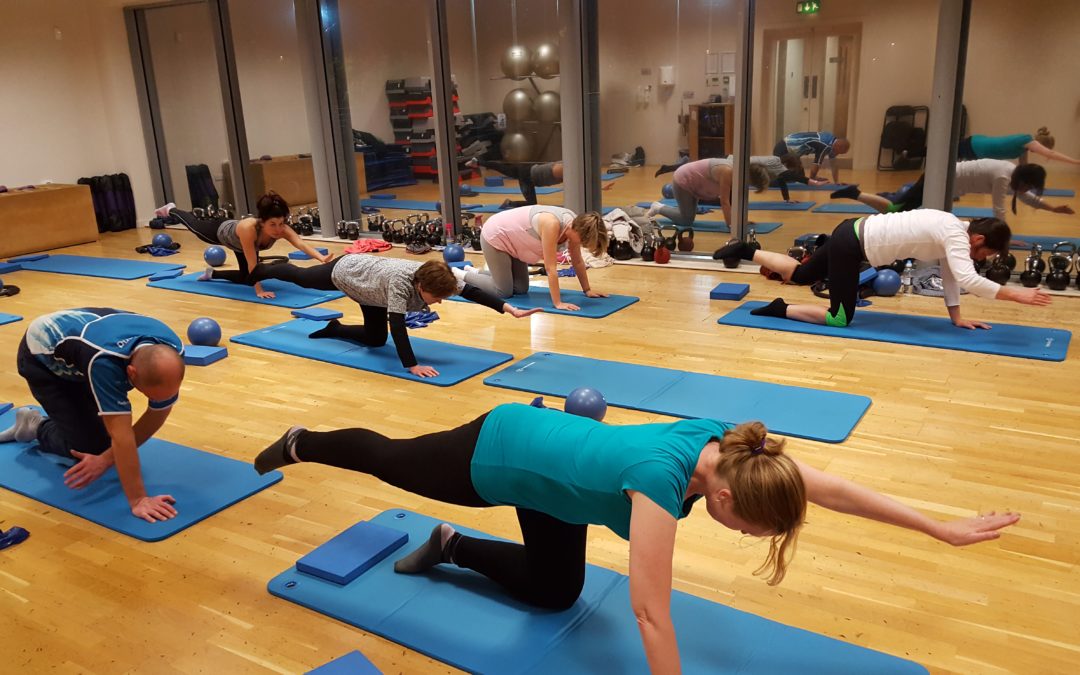 This blog post is written by Luke Gibbons, co-founder of the Cualann Clinic, Bray Ireland & instructor @ Maison Broche et Clos Neuf. Cualann Clinic is a musculoskeletal injury clinic, based in Shoreline Leisure, Bray, Co. Wicklow. We specialise in the diagnosis, rehabilitation & treatment of musculoskeletal injury.
This blog post is written by Luke Gibbons, co-founder of the Cualann Clinic, Bray Ireland & instructor @ Maison Broche et Clos Neuf. Cualann Clinic is a musculoskeletal injury clinic, based in Shoreline Leisure, Bray, Co. Wicklow. We specialise in the diagnosis, rehabilitation & treatment of musculoskeletal injury.
Pilates is a whole body physical exercise system that in essence is designed to improve strength, flexilbity, posture and increase mental awareness. It was first developed in early twentieth century by Joeseph Pilates. He originally called the exercise workout method as ’’ controlology’’, which refers to exercising using only controlled and focused movements.
There is a strong emphasis on using the so called core musculature or ‘’powerhouse’’(as it was called in classical pilates, referring to the low back, stomach and buttock muscles) during the exercise. This is combined with correct alignment, breathing, concentration and movement flow to create a very efficient and beneficial exercise system.
Modern clinical pilates differs from classical pilates, in that it incorporates evidence based knowledge and concepts from exercise science and medicine  into the discipline. This is done with the aim of increasing the safety and benefit that can be got from pilates for the participant. For example, in classical pilates, the spinal position is always flat and rigid, clinical pilates will try to perform all exercises from a neutral spine (not too flat or rounded) and when extra stability is needed for more demanding exercises, a gentle ‘’flatback’’ (not forced or rigid) spinal position is then used. Clinical pilates is also individualised and takes into account a person’s individual posture and muscular balance. Through a specific exercise regime, the aim is to restore a muscular balance and in turn, help restore a “more” neutral posture.
into the discipline. This is done with the aim of increasing the safety and benefit that can be got from pilates for the participant. For example, in classical pilates, the spinal position is always flat and rigid, clinical pilates will try to perform all exercises from a neutral spine (not too flat or rounded) and when extra stability is needed for more demanding exercises, a gentle ‘’flatback’’ (not forced or rigid) spinal position is then used. Clinical pilates is also individualised and takes into account a person’s individual posture and muscular balance. Through a specific exercise regime, the aim is to restore a muscular balance and in turn, help restore a “more” neutral posture.
“More” is an important word to use, as depending on age and subsequent skeletal changes which occur through a person’s lifetime, not everyone will achieve have perfect neutral after a few months of pilates but it should help build strength, flexibility, confidence and awareness in one’s body and help greatly in the maintenance of a healthy back, body and mind.
There is no specific mind training or forms of meditation as there is in yoga. There is no doubt that the concentration required for the proper performance of the movements, combined with the 3d breathing pattern (inhale the lower, outer and back parts of the lungs and ribcage) used will aid in improving focus, relaxation and the level of concentration required during movement naturally improves your body awareness.
 For example, good co–ordination and focus are essential when you have to keep the pelvis, ribcage, shoulder head and neck in correct alignment (which varies in different movements) while breathing correctly , ensuring the correct the stabilising muscle are activated and this all occurs while trying to perform the actual movement! This aligns to pilates original philosophy which is…. how you perform the movement is more important than the movement itself.
For example, good co–ordination and focus are essential when you have to keep the pelvis, ribcage, shoulder head and neck in correct alignment (which varies in different movements) while breathing correctly , ensuring the correct the stabilising muscle are activated and this all occurs while trying to perform the actual movement! This aligns to pilates original philosophy which is…. how you perform the movement is more important than the movement itself.
It has some good evidence that is also more effective in the short term management of back versus standard physio exercises and care. Personally, I have to be of great benefit in the long term management of own back and it has given much more confidence and awareness of my own alignment and movement, as well been of great benefit to in aiding the rehabilitation of my patients.
Improvements muscular strength, endurance, flexibility, better posture, breathing patterns, mental focus and body awareness which gained from pilates are an excellent adjunct to nearly anyone’s fitness regime/sport. It is an exercise system that can used up by nearly anyone (unless acutely injured or suffering from a severe chronic injury) due to its low impactive and restorative qualities.
Luke Gibbons – Cualann Clinic – Facebook



Follow Us!